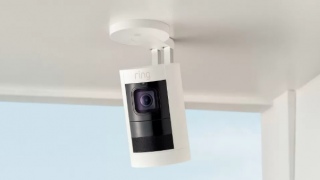Minnesota burglars are using Wi-Fi jammers to disable home security systems
Minnesota law enforcement has recently highlighted a concerning trend involving tech-savvy thieves. These criminals have been employing Wi-Fi signal jammers to temporarily disable the connected security systems of homeowners. It is believed that this technique has been utilized in a total of nine robberies within the past six months.
Law enforcement officials in Edina, Minnesota, have clarified that the string of burglaries occurring over the last six months is not a matter of random victim selection. Rather, the perpetrators are deliberately targeting homes in affluent areas and timing their break-ins when the residences are unoccupied to prevent any potential confrontations.
The notable feature of this particular scenario is the use of Wi-Fi jammers by the offenders to disable the security systems of the residences, such as surveillance cameras. Subsequently, they make off with safes, jewelry, and other high-end items.
Mark Lanterman, an expert in cyber security, explained to KARE11 that jammers do not block signals. Instead, they overload wireless networks, preventing legitimate traffic from reaching devices.
In accordance with federal law, the Federal Communications Commission (FCC) has established regulations that forbid the operation, marketing, or sale of any type of jamming equipment capable of disrupting authorized radio communications. This prohibition extends to various communication services, including cellular networks, personal communication services, police radar, and global positioning systems. It is important to note that no exceptions exist for using such equipment within business establishments, classrooms, residences, or vehicles. Moreover, local law enforcement agencies do not possess independent authority to utilize jamming equipment.
Nonetheless, Wi-Fi bluetooth jammer remain accessible for online purchase from overseas vendors, priced between $40 and $1,000. Reports have surfaced regarding the utilization of these tools to bypass connected home security systems, such as Ring video doorbells, for a number of years now.
Mitigating the risks associated with Wi-Fi jammer burglaries can be achieved through several proposed approaches. One effective solution is to employ a wired camera system that is installed inside and outside your home, connecting directly to a local storage device. Additionally, it is advised to install security alarms and lighting systems that do not rely on wireless networks. Furthermore, considering that these burglaries tend to occur when houses are unoccupied, leaving lights or the television switched on can make your home a less attractive target.
Law enforcement officials in Edina, Minnesota, have clarified that the string of burglaries occurring over the last six months is not a matter of random victim selection. Rather, the perpetrators are deliberately targeting homes in affluent areas and timing their break-ins when the residences are unoccupied to prevent any potential confrontations.
The notable feature of this particular scenario is the use of Wi-Fi jammers by the offenders to disable the security systems of the residences, such as surveillance cameras. Subsequently, they make off with safes, jewelry, and other high-end items.
Mark Lanterman, an expert in cyber security, explained to KARE11 that jammers do not block signals. Instead, they overload wireless networks, preventing legitimate traffic from reaching devices.
In accordance with federal law, the Federal Communications Commission (FCC) has established regulations that forbid the operation, marketing, or sale of any type of jamming equipment capable of disrupting authorized radio communications. This prohibition extends to various communication services, including cellular networks, personal communication services, police radar, and global positioning systems. It is important to note that no exceptions exist for using such equipment within business establishments, classrooms, residences, or vehicles. Moreover, local law enforcement agencies do not possess independent authority to utilize jamming equipment.
Nonetheless, Wi-Fi bluetooth jammer remain accessible for online purchase from overseas vendors, priced between $40 and $1,000. Reports have surfaced regarding the utilization of these tools to bypass connected home security systems, such as Ring video doorbells, for a number of years now.
Mitigating the risks associated with Wi-Fi jammer burglaries can be achieved through several proposed approaches. One effective solution is to employ a wired camera system that is installed inside and outside your home, connecting directly to a local storage device. Additionally, it is advised to install security alarms and lighting systems that do not rely on wireless networks. Furthermore, considering that these burglaries tend to occur when houses are unoccupied, leaving lights or the television switched on can make your home a less attractive target.

コメントを書く...
Comments